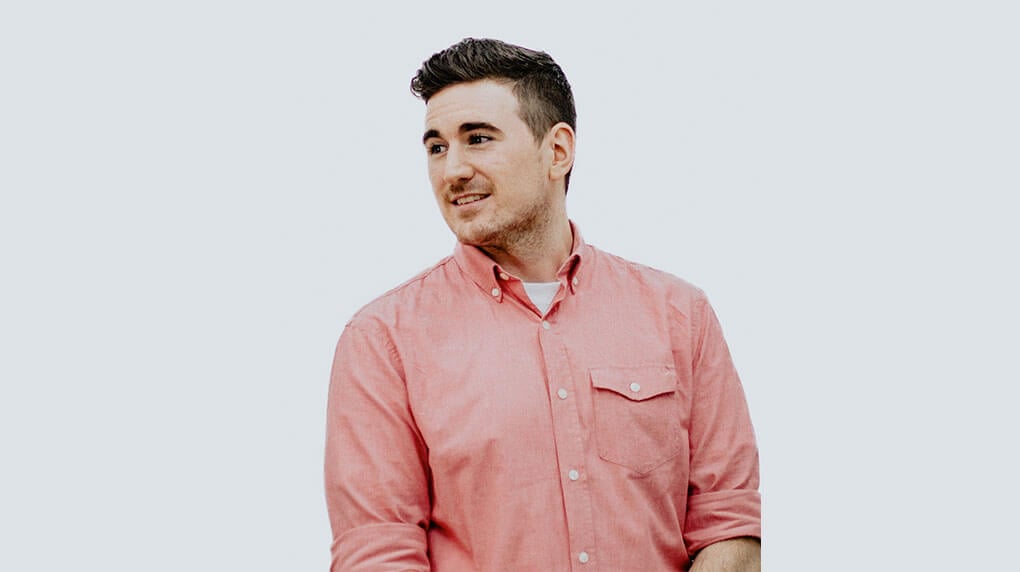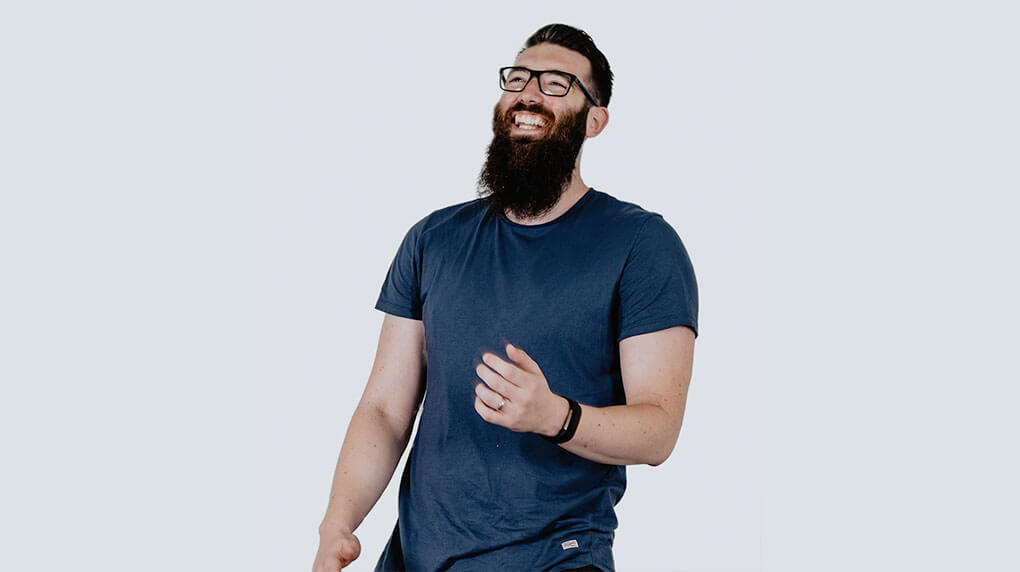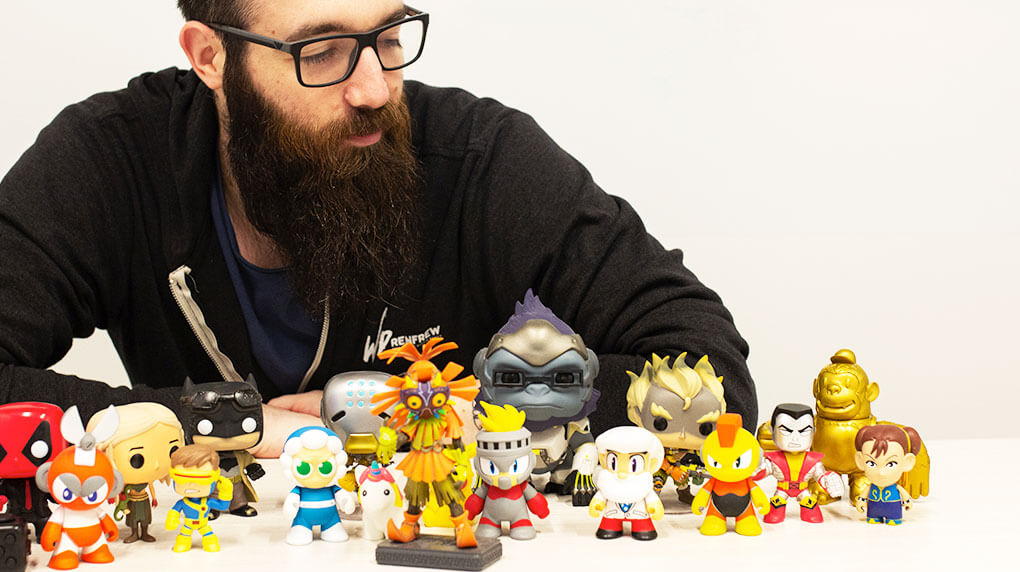What do you do when you hit a creative block?
It’s this question, or some variant of it, young creatives always ask us. Creative blocks, staying motivated, overcoming Imposter Syndrome, or even just getting started are barriers every creative person experiences. But, the feeling that comes with hitting a stride and creating something from nothing keeps us pushing through those barriers.
World Creativity and Innovation Day
World Creativity and Innovation Day is celebrated internationally each year on April 21st. The day was established by the United Nations to honor the creative and innovative activities of people around the world.
As members of a creative industry, we’re all about celebrating creativity and innovation. We wanted to take Creativity and Innovation day one step further and give back to our community with some tangible advice, thoughts, and general knowledge about how to overcome common challenges in our field.
We sat down with a few members of the creative team at Major Tom — Geoff Ravenor, Darren Maher, Ed Egydio, and Carolina Horna — to see what they had to say.
Geoff Ravenor, Visual Designer
Geoff Ravenor, a business school drop out who fell in love with photography, is a visual designer at Major Tom. He tells us he finds inspiration walking around outside and, alternatively, diving into the digital world. Geoff’s go-to design blogs include Abduzeedo and Brand New when he wants to “see what else is out in the world”. His creative outlets outside of work include painting miniature models, which he uses as an exercise to “play with colors” and clear his mind.

Sometimes getting started is the hardest part. Do you have a process, mantra, activity, or habit you use to get motivated?
Geoff: “Even though my job is very visual, I usually start most projects by looking at words. Whether I'm working on a rebrand or website the thesaurus is my go-to tool. I use it to build a list of words that best describe what it is I'm trying to create. It helps me understand what colors, typefaces, photography or illustration style would be appropriate to ensure the project presents itself with the right personality to the world.”
Being able to articulate your design can help with understanding the creative direction you need to take. Geoff’s process, using a thesaurus and building a list of words to describe what he is creating, can provide a way to describe and direct what you intuitively know.
When you are working on something and you experience a creative block, how do you overcome it?
Geoff: “I'm either really bad at recognizing I've hit a creative block or I'm in denial and just try to push through it. But when I do finally come to my senses I'll either switch the project I'm working on to shake things up, or I'll just pack it away and take the night to sleep on it and usually an idea springs up when I'm not even thinking about it.”
Recognizing you’ve hit a creative block isn’t always clear: finding yourself aimlessly searching the internet, getting increasingly frustrated with a project, or not knowing what to do next can all be signs that it’s time to take a step back and reassess.
How have you found working from home affects your productivity and creativity? Do you have any advice on how to stay creatively motivated while working from home?
Geoff: “With working from home I've found productivity to be extremely high but creativity very low. When you're not surrounded by immensely talented and creative people every day it's hard to feel inspired. Additionally, not having their creative minds within earshot at a moment's notice to bounce ideas off of makes things more difficult as well. So my solution has really been to get outside and walk walk walk (obeying the 2m distancing rule of course). I have to get my eyes off of a screen and get outside to enrich all my senses to get the creative juices flowing again.”

Geoff’s experience of high productivity and low creativity when working from home is a universal one. The New York Times has an entire article on exactly this, Kevin Roose writes that although research shows workers gaining productive hours while working from home, they’re missing those harder-to-measure benefits like creativity and innovative thinking. Team cohesion and problem-solving, unfortunately, suffers with remote collaboration.
Luckily, we live in a time where technology has connected us more than ever before. Don’t be afraid to hop on a ten-minute Zoom call to chat about an issue you’re having with your team.
Creative work often has subjective standards; it is in its nature to be judged based on sentiment or the feelings it can instill. So, creatives are often more vulnerable to self-doubt and Imposter Syndrome. If you have experienced Imposter Syndrome, how are some ways you have dealt with or overcome it?
Geoff: “There is always a point in my projects where I reach rock bottom. The point where what I make sucks, my ideas suck, I suck, my career is in ruins and I'm a fraud. All of this happens because I place such lofty goals and expectations on my work, which usually end up being much higher than those of the client.
So my advice for anyone else is before you start a project, run your goals for the project past someone else and see if they feel if what you're planning is achievable with the perimeters of the project. Because perhaps what you have planned will push the limits of the budget or timeline or technological ability. It's good to get an outside perspective to look at what you're planning and make sure it's doable within these boundaries.”
Placing too high of expectations on yourself or not setting realistic project goals can lead to burnout. It’s easy to get ahead of yourself when you can see how great a project has the potential to be. But, you have to keep in mind your own limitations: stop overextending yourself and stop holding yourself up to an unsustainable standard.
Like Geoff mentioned, your coworkers can be trusted unbiased sources you can use to gain perspective on your work or your project goals.
Is there anything you would like to add?
Geoff: “At the end of the day it's just a job. And even if you have mixed feelings about the end result as long as the client is happy with the result, that's a win. There will always be something you wish you could change about the work you've done. But that's what you learn and apply to the next project. There is no use looking back.”
This is for the perfectionists everywhere: at some point, you have to stop. Edits and reworks should only take you so long. In a subjective, creative field, it’s important to know when to let go of a project. If your client is happy, then you have done your job.
Darren Maher, Creative Director
Deciding on a career, especially when you’re young, is a daunting task — not everyone knows ‘what they want to be when they grow up’. Darren Maher, with no idea what he wanted to do with his life, took an aptitude test, pointing him in the direction of a creative career. That test was a catalyst to Darren studying Multimedia Applications Development for four years before starting a freelance career. Moving to Canada, he cut his teeth at a small startup company.

We asked Darren where he finds inspiration, “In everything, really,” he answered. “I always try to be alert to what's around me and what grabs and holds my attention. Then question why that is. Once I have an understanding of that, I can apply it to my work.” Asking yourself why something is inspiring or attention-grabbing can help you to understand the basic mechanics of good design, persuasive advertising or even human nature. Why do we love videos like Google’s Year in Search? Because they evoke an emotional response — and emotions can be incredibly persuasive.
Sometimes getting started is the hardest part. Do you have a process, mantra, activity, or habit you use to get motivated?
Darren also finds inspiration in Awwwards, Brand New (much like Geoff), The Futur (specifically, Chris Do’s pieces), and the journeys, successes, and failures specific to his childhood football heroes.
Darren: “I like to assess my mood and then find a good playlist on Spotify that relates to my mood. Music is really important for me to get in the zone.”
Research shows that music can lower anxiety or even increase divergent thinking.
When you are working on something and you experience a creative block, how do you overcome it?
Darren: “I move away from that project. For myself, I can't force through creative blocks. Start working on something else, go for a walk, play a video game. Basically, I'm just trying to stop thinking about it on a conscious level. Subconsciously the problem is still there and you are working through it with all the parameters like audience demo, goals, differentiators, etc. and if your mind is more relaxed ideas come easier.”
Darren’s process is grounded heavily in science. When your mind is relaxed and you're engaging in an activity that doesn’t take a lot of attention, your brain will work through problems on a subconscious level. This distraction-method involves the problem-solving resources available to your non-conscious mind -- which, according to Psychology Today, are “millions if not billions of times larger than that of the conscious.”
The subconscious mind is a powerful place containing Aha! moments, Rorschach inkblot interpretations, and the reason that that one song is always stuck in your head. Harness its power through mundane tasks.

Do you have any advice for someone experiencing Imposter Syndrome?
Darren: ”If you are experiencing imposter syndrome, welcome to the club. Every creative goes through it. To get through it, look over past work you've done that you are happy with. It's nice to remind ourselves that we are capable of good work when we are doubting ourselves.
There are 5 different types of imposter syndrome: get familiar with them and identify which types you fall into. Understanding why you feel that way and owning it can be quite liberating.”
Dr. Valeria Young, the expert on Imposter Syndrome, has identified 5 different types of Imposter Syndrome. And, as Darren mentioned, understanding which applies to yourself can give you the tools and language you need to understand why you feel this way and ultimately, will help you to overcome it.
Is there anything you would like to add?
Darren: For me personally I love looking outside of my industry and learning about different approaches to creativity through different mediums. Like how Disney's Imagineers work, how the X-men animated series was created, the hurdles encountered building the game Ori and the Blind Forest, and how they did the special effects on Shaun of the Dead.
What you should take away is that there is no true approach to creativity that everyone can follow. If you find something works for you, embrace it. So many incredible innovations happen because of limited resources.”
This is part 1 of a 2-part series on overcoming creative blocks. Read part 2 now.